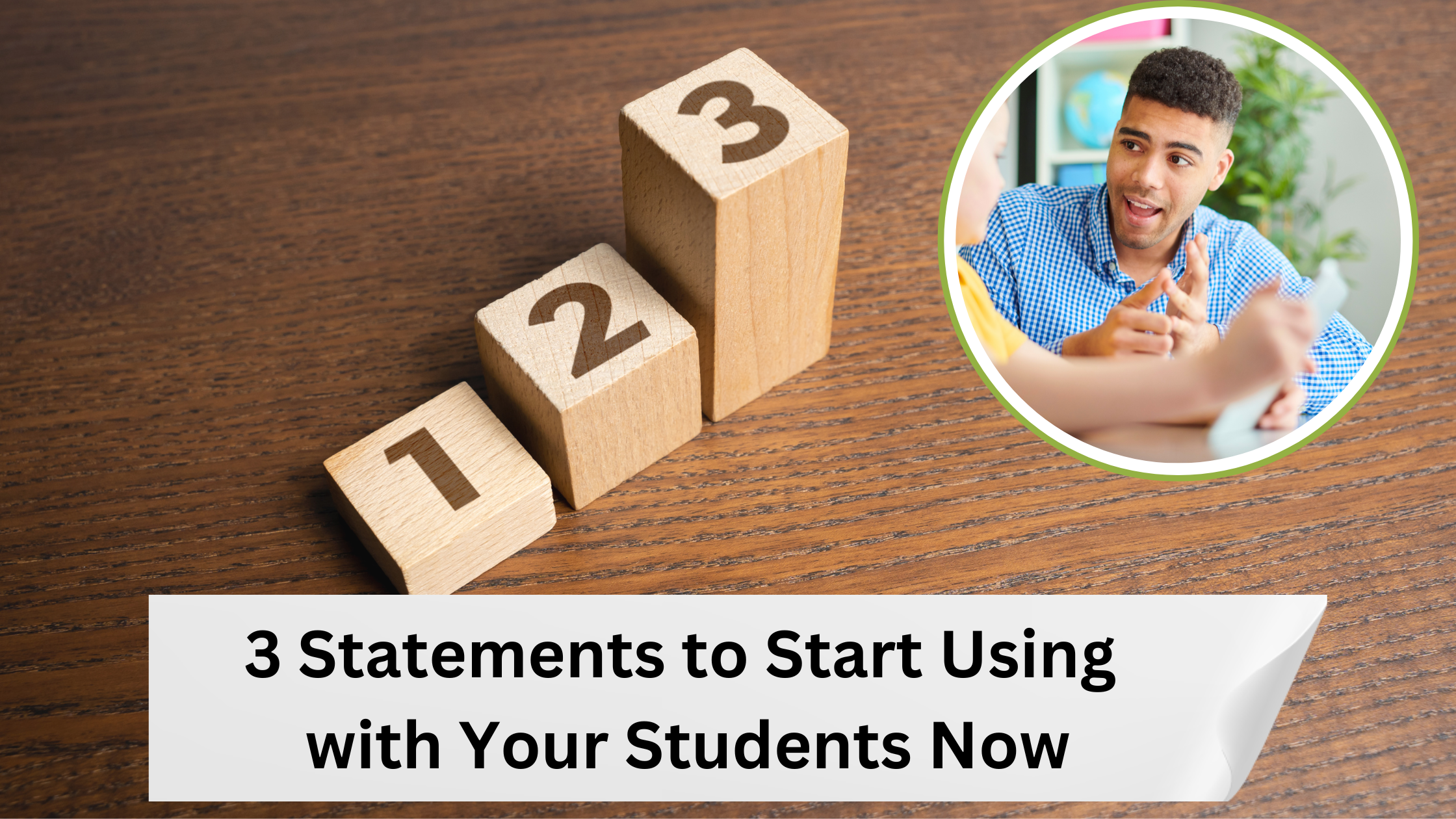There is so much to think about as a teacher. There are a million decisions to make, numerous kids to attend to, pressures of paperwork, to-do lists and building initiatives. It is overwhelming.
I believe every teacher wants to get better at their craft. But, it can be hard given this context.
What can you do that is little to no prep, but will still dramatically impact students?
3 Statements to Start Using with Your Students NOW
- “You’re the type of writer who…”
- This one statement does so much for student writers, including…
- It allows them to be seen, to be valued. Think about anytime someone notices something in you and names it. You feel valued and you are motivated to continue. It is a human need to be seen and a beautiful gift to give our students.
- It names a move they are making as an author, which increases the chance that they will be intentional with that move going forward. Many times, students aren’t thinking about what they are intentionally doing and we want to change that. The greatest writers don’t follow a formulaic writing that anyone could put together. They intentionally use dialogue to move the story along or they use word choice that has connotation, or they use illustration techniques that adds detail to the story. I have seen this happen in a kindergarten classroom with five-year-olds and it is amazing to see the agency and intentionally that emerges.
- It develops writing identity. Research shows a direct link between writing identity and writing achievement. This statement of “You’re the type of writer who…” said over and over again facilitates that own thinking in their mind–whether the teacher is there conferring with them or not.
- This one statement does so much for student writers, including…
- “Will you share ‘x’ with the rest of the class?”
- This is an absolutely beautiful way to facilitate writing community. Your students begin to see each other as a source of knowledge AND they begin to see themselves as a source of knowledge. It shows them that you don’t have to know everything in order to help others–something that should apply in academics and in life.
- It allows students that oftentimes don’t feel seen to have an opportunity to shine, boosting their confidence in writing AND their relationship with their peers.
- “What move are you making that another author used?”
- This facilitates the practice of looking to someone else who is more experienced to learn how to do something. We all do this–from the time we redecorate the kitchen to the time we write a grant. It’s a common practice in the learning and doing sphere. Look to someone who is one step (or many steps) ahead of you. Study what they do and try to replicate in some fashion.
- It increases engagement when you are showing them how to do this with engaging texts—whether it be a fantasy story for fourth grade or an illustration technique in kindergarten. Beautiful, engaging literature brings life to the classroom.
- This also includes learning from peers. What move did they learn from a peer that they are trying out? This creates writing community!
As you go into this year, during a time where teaching is so very hard, choose one small thing you can get better as a teacher of writing and focus on that until you have that down.
It doesn’t take hours and hours of professional learning to get better as a teacher. It takes small, intentional moves over time that doesn’t add to your plate. Give it a shot!
Below is a PDF to print off that has the three questions. Print it off and take it with you to conferences and small groups.



